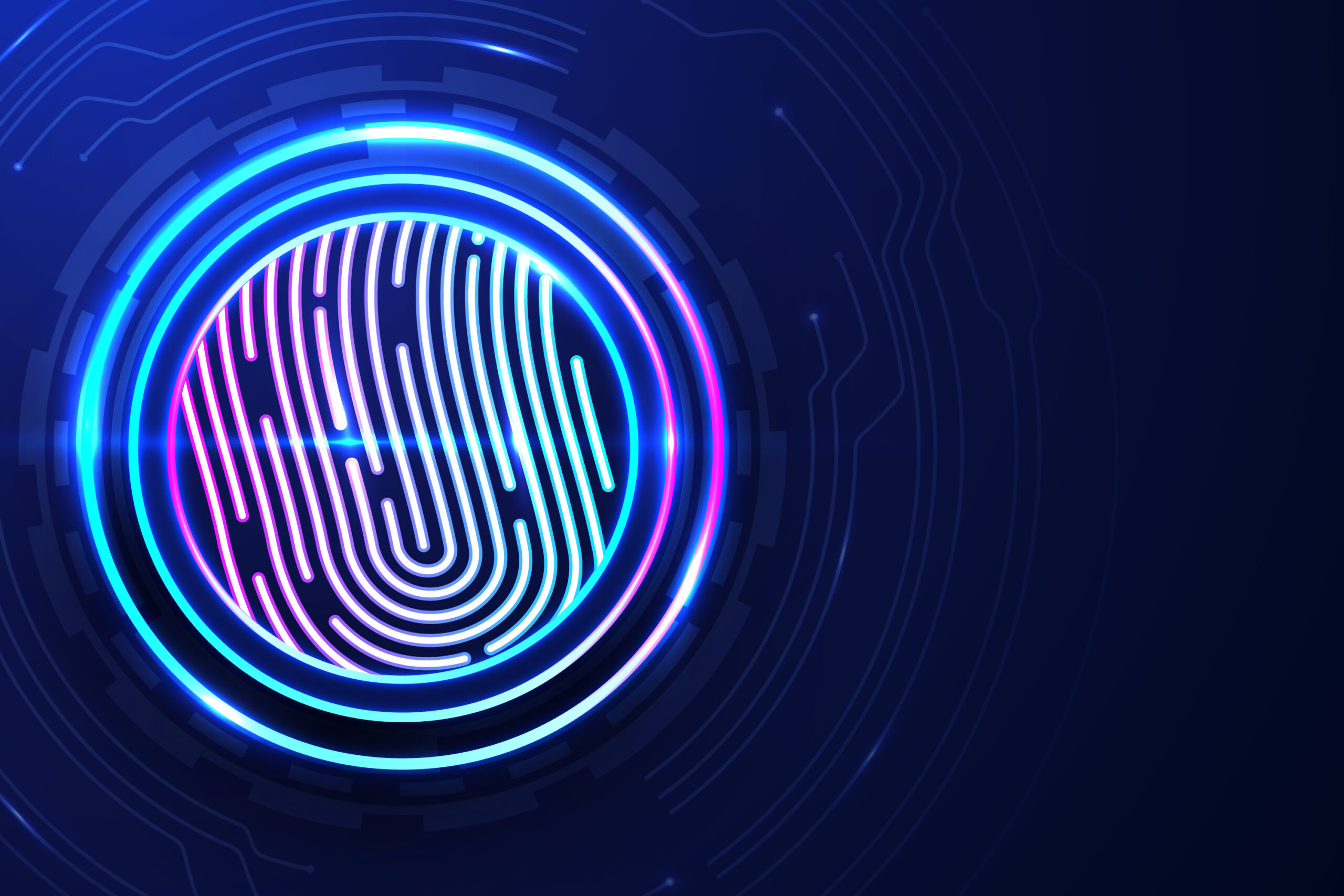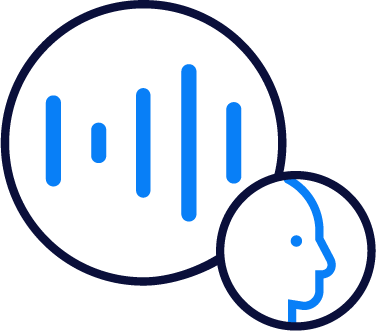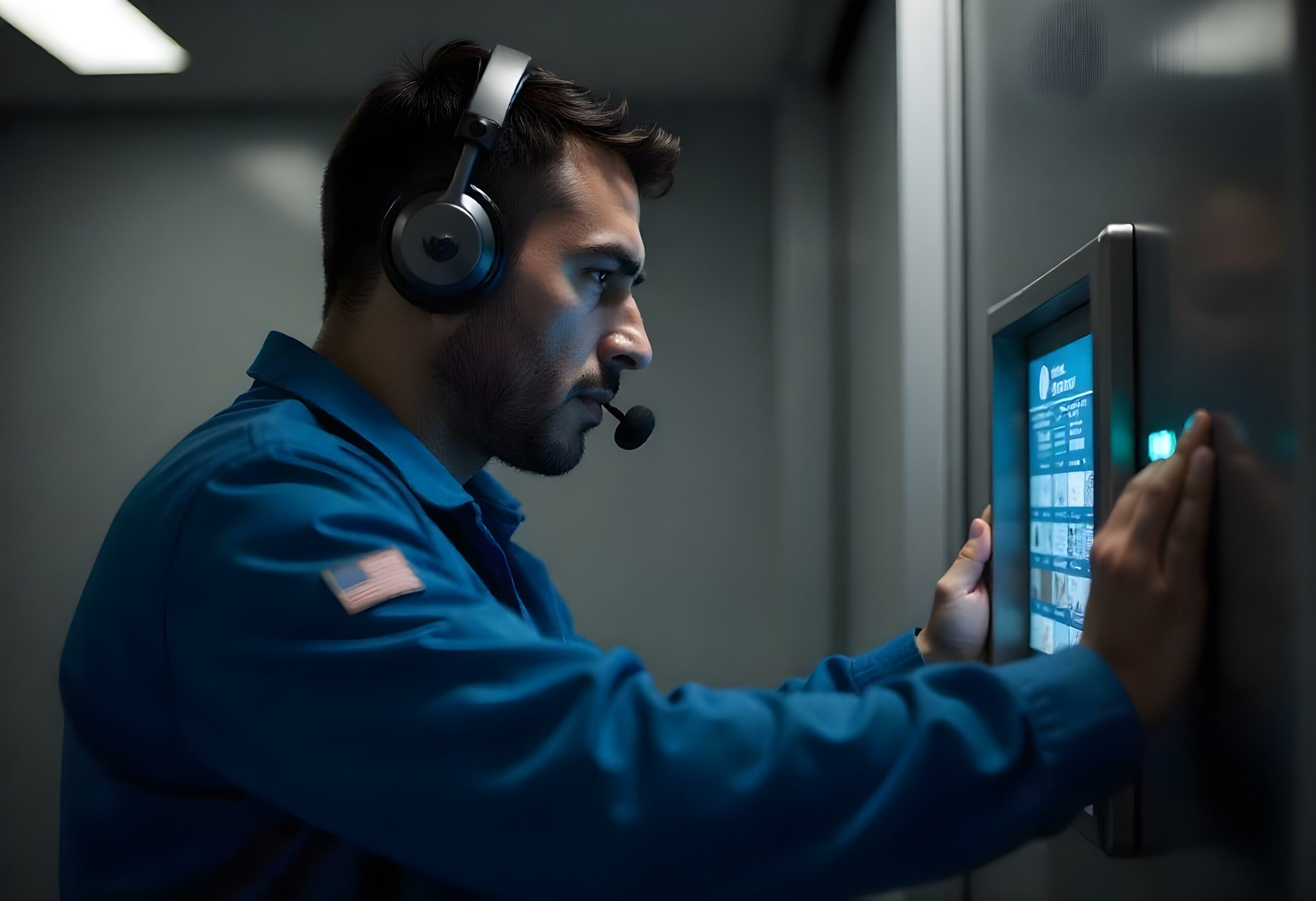The voice is a fundamental part of a person’s identity, reflecting their uniqueness. In both personal and professional contexts, it serves as a key marker of individuality, much like a fingerprint. Every person’s voice carries a unique set of characteristics –such as pitch, tone, or rhythm– that can be used to recognize them. This is the foundation of voice biometrics, which relies on these distinct vocal traits in order to verify people’s identity.
What is Voice Biometrics?

Voice Biometrics, also known as speaker recognition, is a cutting-edge technology that facilitates identity verification by analyzing and transforming voice patterns into a unique digital biometric signature. This signature acts as a form of biological data, enabling systems to authenticate or recognize individuals with exceptional accuracy and reliability.
The process involves capturing speech samples and creating a voice template, which is then compared to a pre-established enrollment template for verification. In professional settings, this technology shines due to its simplicity and effectiveness, your voice functions as a password you never have to remember! With just a spoken word of phrase, the system immediately identifies and grants access to the authorized worker.
Voice biometrics harnesses the distinctiveness of vocal traits, offering a seamless blend of convenience and security. It eliminates the need for complex passwords or physical credentials, making it an effortless and intuitive method of authentication. This technology is particularly advantageous for workers in environments where quick and secure system access is essential, streamlining workflows while enhancing overall security.
Voice biometrics: one system, two applications
Voice biometrics is divided into two key applications: voice identification and voice authentication, each serving distinct purposes in identity verification.

On the one hand, voice identification involves comparing a voice sample against a database of stored voice prints to find a match. This application is particularly useful in environments where quick and accurate identification is crucial. For instance, in a large warehouse with many employees, voice biometrics can streamline operations by swiftly identifying workers during voice-directed tasks.
When employees use voice-picking systems to fulfill orders, their voices can be cross-checked with the database to confirm their identity, ensuring that the right person is performing the task. This not only enhances security but also improves efficiency in managing large teams.

On the other hand, voice authentication is focused on verifying a user’s identity by comparing their current voice input to a previously enrolled voice model. This method ensures that only the authorized individuals can access secured systems or areas. For instance, if a worker needs to unlock a door related to a sensitive system or area, the system will recognize their voice and decide whether to grant access based on the voice match.
This offers an additional layer of security by ensuring that only verified individuals can interact with critical infrastructure or information.
In both applications, voice biometrics leverages the natural uniqueness of each individual’s vocal characteristics, providing a seamless and secure form of identification and authentication that reduces the reliance on physical credentials or complex passwords. This technology can dramatically improve both convenience and operational security, making it an ideal solution for environments that require fast, accurate and reliable identity verification.
Types of Voice Biometrics Processes
Voice biometrics processes are typically categorized based on how user profiles are created, registered, and authenticated. Vivoka’s technology supports both of these methods–text-dependant and text-independent–either as standalone solutions or in combination, depending on the use case and security needs. Each method has its own advantages and trade-offs in terms of flexibility, accuracy, and ease of use.
Text-dependent Voice Biometrics
In text-dependent voice biometrics, the system requires the worker to speak a specific, pre-enrolled phrase or password. This means that during authentication or identification, the user must say the exact phrase they registered during enrollment. Although this approach demands that users remember and repeat a specific phrase, it has several advantages in terms of speed and accuracy.
Because the system only needs to compare the user’s voice for a known and controlled phrase, the authentication process is typically faster and more precise. This makes text-dependent voice biometrics an ideal choice for scenarios where high accuracy and quick response time are critical, such as secure logins, voice-activated commands in industrial settings, or authorizing financial transactions. Moreover, this method ensures that the system can quickly and effectively distinguish between users, minimizing the likelihood of false matches or unauthorized access.
Text-independent Voice Biometrics
On the other hand, text-independent voice biometrics offers more flexibility, allowing the user to speak freely without needing to recall or repeat a specific phrase. This means the system can analyze and recognize the user’s voice regardless of what they say. It is particularly useful in situations where users need to interact with the system naturally, such as during voice commands, conversational AI interactions, or complex workflows where freedom of speech is essential.
Because the system is not limited to a specific phrase, it captures more of the speaker’s natural vocal characteristics, providing a more comprehensive and adaptable model of the user’s voice. This flexibility allows for smoother interactions and is particularly beneficial in dynamic environments like customer service, where users might respond with different phrases depending on the situation.
However, the trade-off with text-independent voice biometrics is that it requires more training and testing time for the system to accurately recognize the user. The system needs to gather and process more data points from the user’s voice across various contexts and phrases to create a reliable voiceprint. The performance of text-independent systems may take longer to reach the same level of accuracy as their text-dependent counterparts. Additionally, due to the increased complexity, these systems may require more computational power and sophisticated algorithms to ensure reliable performance.
Combining both methods for optimal results
Vivoka’s technology offers both text-dependent and text-independent processes, and in some scenarios, combining these methods can provide the best of both worlds. For example, an initial quick authentication could be text-dependent, while continuous monitoring or secondary authentication could be text-independent. This hybrid approach balances the need for speech with the desire for flexibility and natural interaction, ensuring that users have a seamless experience while maintaining robust security.
One of the key benefits of Vivoka’s voice biometrics is its ability to function entirely offline. This means that all voice data and authentication processes are handled locally, ensuring that no personal information or voiceprints are stored on external servers. As a result, businesses can safeguard sensitive data and comply with strict privacy regulations, offering peace of mind to users and companies alike. This offline capability also eliminates concerns about connectivity issues, making Vivoka’s solution reliable in environments with low or no internet access.
Additionally, Vivoka’s technology is designed to recognize multiple languages and different accents, which makes it highly adaptable and scalable for use in a wide range of global industries. This flexibility ensures that the solution can be deployed in diverse regions without compromising on accuracy or user experience. Whether used in multilingual environments like international warehouses or in global healthcare systems, Vivoka’s voice biometrics accommodates the natural diversity of human speech.
By integrating offline operation, multi-language support, and accent recognition, Vivoka’s voice biometrics solution streamlines workflows, enhances security, and provides a seamless, scalable user experience that meets the needs of industries operating on a large scale, ensuring both efficiency and data protection at every level.
Voice biometrics in different industries
Voice Biometrics has a pivotal role in the efficiency enhancement and ease of access in various industries such as healthcare, logistics or field services. This technology streamlines workflows and strengthens security protocols while providing a seamless user experience. Below is an in-depth look at how voice biometrics is revolutionizing these industries.
Medical Devices

In the MedTech industry, voice biometrics is valuable for ensuring secure access to critical systems and enabling hands-free interaction, mainly in environments where speed, accuracy, and sterility are paramount. Medical staff, such as doctors, surgeons or even nurses, often need quick, reliable and secure entry to medical devices, patient records, or diagnostic systems.
Voice biometrics allows healthcare professionals to authenticate or identify themselves using their unique voice patterns, granting access without the need to type any passwords or physical contact.
- Hands-free operation: In environments such as operating rooms, where maintaining sterile conditions is critical, voice biometrics enables medical staff to interact with medical devices or access patient information without touching any surfaces. For instance, a surgeon can retrieve vital data mid-surgery without breaking the sterile field, simply by using voice commands.
- Enhanced privacy: Sensitive medical data, such as patient records, can be protected by voice authentication, ensuring that only authorized personnel can access this documentation. This adds an additional layer of privacy, especially in high-stakes environments where data breaches can have severe consequences.
- Efficiency in high-pressure scenarios: In emergency rooms or intensive care units, where quick decision-making is essential, voice biometrics allows for fast access to patient information, diagnostic tools, and medical databases, saving precious time in life-threatening situations.
Logistics
In logistics and supply chain management, particularly in warehouse operations, voice biometrics is integrated into voice-directed workflows to streamline tasks and enhance security. Warehouse employees, who often rely on voice-picking systems to fulfill orders, can be quickly identified and authenticated by their voice, allowing for more efficient task allocation and reducing the need for manual logins or physical keycards.
Key benefits:
- Faster operations: Voice biometrics eliminates the need for workers to log into systems manually or use physical credentials, allowing them to move seamlessly between tasks. This boosts productivity in environments where speed is critical, such as picking, packing, and shipping processes in large warehouses.

- Task accuracy and security: Voice authentication ensures that only authorized employees are able to perform specific tasks, such as order fulfillment or inventory management. This reduces errors and guarantees that the right person is handling each operation, which is crucial for both accuracy and accountability in the supply chain.
- Seamless integration: Voice biometrics can be integrated into existing warehouse management systems, enabling companies to optimize their operations without disrupting established workflows. It enhances the overall efficiency of the supply chain, from inventory tracking to order dispatch, while maintaining strict security protocols.
Field services

In field services, where technicians often work in remote or challenging environments, voice biometrics provides a significant efficiency advantage by allowing secure access to essential systems and data. Technicians may need to consult repair manuals, equipment diagnostics, or customer data while on-site, and voice authentication makes this process faster and more convenient.
Key benefits:
- Hands-free access: Field technicians frequently work in environments where entering passwords or using physical devices is cumbersome. With voice biometrics, they can access important information simply by speaking, without having to interrupt their work.
- Real-time data: Voice biometrics enables field workers to gain access to live data or repair instructions while on the job, allowing them to perform complex repairs or diagnostics without returning to base for login credentials. This reduces downtime and increases the number of tasks that can be completed in a single day.
- Security in remote environments: Since technicians often work in remote or unmonitored locations. Voice biometrics ensures that only authorized personnel can access sensitive information or operate equipment. This adds an extra layer of security in industries like utilities, telecommunications, and heavy machinery maintenance, where unauthorized access could lead to safety risks or system failures.



